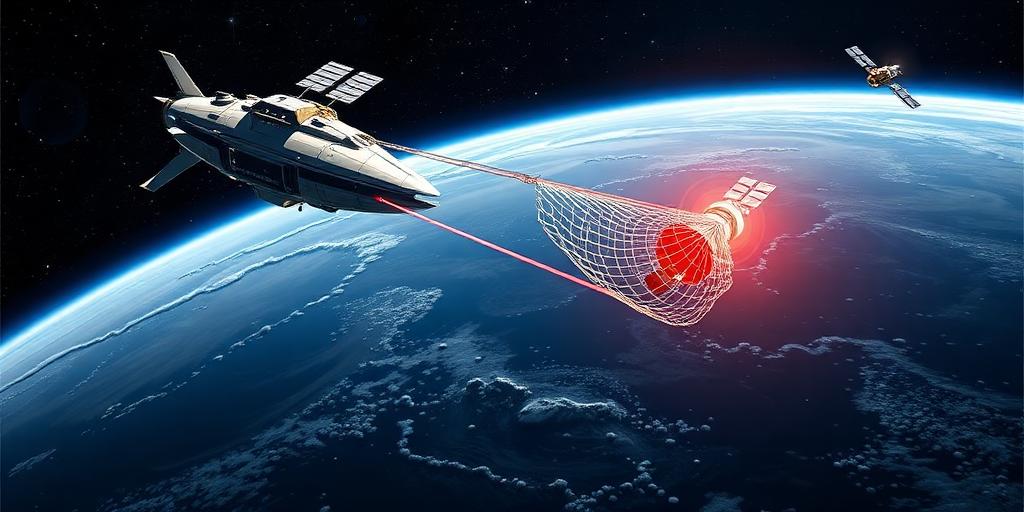The cosmos, once perceived as an infinite void, is increasingly becoming a cluttered junkyard. Orbital space, a critical resource for humanity's technological advancement, is now fraught with the perils of space debris. This escalating issue poses significant risks to operational satellites, future space missions, and even the long-term sustainability of space exploration. Understanding the dangers of space debris and exploring viable space debris removal technologies are paramount to preserving this invaluable domain.
The Looming Threat: What is Space Debris?
Space debris, often referred to as space junk or orbital debris, encompasses any human-made object orbiting Earth that no longer serves a useful purpose. This includes spent rocket stages, defunct satellites, fragments from collisions or explosions, and even tiny flecks of paint. Ranging from microscopic particles to multi-ton derelict spacecraft, these objects travel at incredibly high velocities—up to 28,000 km/h (17,500 mph) in low Earth orbit. At such speeds, even a small fragment can inflict catastrophic damage.
The Escalating Dangers of Space Debris
The implications of a continually expanding field of orbital debris impact are severe and multifaceted:
- Damage to Operational Satellites: Collisions with space debris can severely damage or destroy active satellites, disrupting essential services like GPS, weather forecasting, telecommunications, and national security systems. The cost of replacing these assets is astronomical, not to mention the loss of critical data and services.
- Risk to Human Spaceflight: Astronauts aboard the International Space Station (ISS) regularly perform evasive maneuvers to avoid larger pieces of debris. Even tiny fragments can puncture spacecraft hulls or damage vital equipment, posing a direct threat to human life.
- Kessler Syndrome: This theoretical scenario, proposed by NASA scientist Donald Kessler, describes a cascading effect where a single collision generates more debris, leading to further collisions, and so on. This chain reaction could render certain orbital altitudes unusable for generations, effectively locking humanity out of significant portions of space.
- Obstacle to Future Missions: The growing density of *space junk* increases the risk for new satellite deployments, spacecraft launches, and crewed missions, making space access more hazardous and expensive.
Strategies for Cleaning Up Space Junk
Mitigating the problem of space debris requires a dual approach: preventing new debris and actively cleaning up space junk that already exists. Numerous innovative solutions are being developed and tested:
1. Debris Mitigation and Prevention
Preventative measures are the first line of defense in managing space junk:
- Design for Demise: Designing satellites and rocket stages to burn up completely upon re-entry into Earth's atmosphere, preventing them from becoming long-term debris.
- Controlled Re-entry: Implementing propulsion systems that allow defunct spacecraft or rocket stages to de-orbit safely and burn up over unpopulated areas.
- On-orbit Servicing and Refueling: Extending the lifespan of satellites through maintenance and refueling reduces the need for new launches and the creation of more debris.
- Collision Avoidance Maneuvers: Continuously tracking known debris and maneuvering active satellites to avoid potential impacts.
2. Active Debris Removal (ADR) Technologies
These technologies aim to remove existing large pieces of debris from orbit:
- Nets and Harpoons: Concepts involve using specialized spacecraft to deploy large nets or fire harpoons to capture defunct satellites or rocket bodies, then drag them into the atmosphere for controlled disposal.
- Robotic Arms: Similar to the robotic arm on the ISS, advanced robotic systems could grapple debris, securing it for de-orbiting.
- Laser Ablation: Ground-based or space-based lasers could be used to vaporize a small portion of a debris object, creating a tiny thrust that alters its orbit and causes it to re-enter the atmosphere. This method is particularly promising for smaller, uncooperative debris.
- Magnetic Tugs: For debris made of conductive materials, a spacecraft could use powerful electromagnets to capture and tow objects to a disposal orbit or for de-orbiting.
- Drag Sails: Attaching a deployable sail to a defunct satellite that increases atmospheric drag, accelerating its de-orbiting process.
International Cooperation and the Way Forward
The problem of space debris is a global challenge, transcending national borders. International cooperation and the establishment of universally adopted guidelines, such as those from the Inter-Agency Space Debris Coordination Committee (IADC), are crucial. Continued investment in research and development for space debris removal technologies, coupled with robust regulatory frameworks, will be essential for ensuring the safe and sustainable use of Earth's orbital environment for future generations. The proactive removal of significant debris and a commitment to responsible space practices are not merely options but necessities for humanity's continued presence in space.




